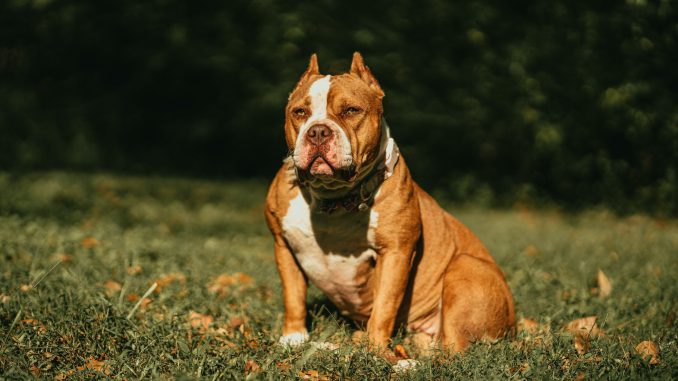
Oh, this is a muscular, confident dog that struts by your side, turning heads with its sheer presence. This isn’t just any dog; it’s an American Bully, a breed that combines strength and gentleness in a way that defies expectations. These dogs are like the bodybuilders of the canine world, yet beneath their robust exterior lies a heart of gold.
Every time I encounter an American Bully, I’m reminded of the old saying, “Don’t judge a book by its cover.” Here’s a breed that will challenge every preconceived notion you have about dogs, especially those that look as tough as they do.
In this article, we’re going to delve into the world of the American Bully, exploring their unique characteristics, temperament, and why they might just be the dog you never knew you needed. Buckle up; this is going to be an interesting ride!
TABLE OF CONTENTS
- American Bully Quick Breed Summary
- Origins of the American Bully
- American Bully Physical Appearance
- The Temperament of American Bullies
- Caring for American Bullies
- How to Train an American Bully
- The Most Common Health Concerns Among American Bullies
- The Cost of Owning an American Bully
- FAQs About American Bullies
- So, Is the American Bully Right For You?
American Bully Quick Breed Summary
Origins of the American Bully
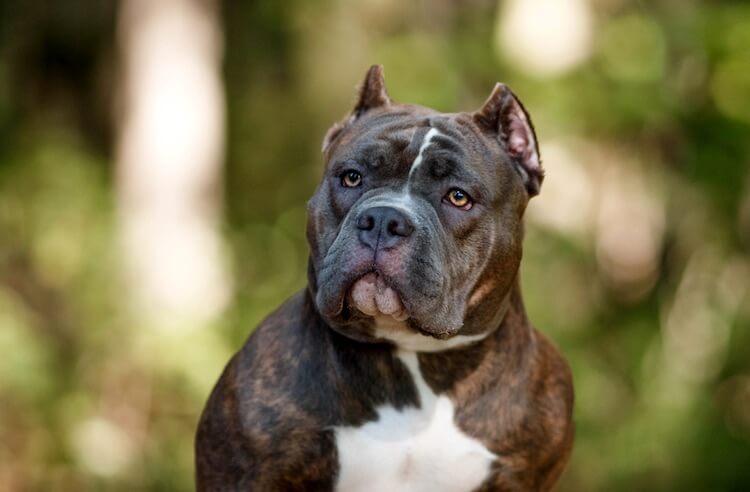
The story of the American Bully is a captivating chapter in the world of canine breeds. This breed, emerging in the late 20th century, represents a deliberate and thoughtful effort to blend the admirable qualities of its ancestors into something truly unique.
The Birth of the American Bully
It all started in the United States, where a vision to create a new breed led to the American Bully. This breed was born from the desire to combine the physical strength and courageous spirit of the American Pit Bull Terrier and the American Staffordshire Terrier with a more family-oriented and stable temperament. Breeders were committed to developing a dog that was not only strong and athletic but also gentle and friendly, suited for both companionship and protection.
This breeding strategy aimed to produce a dog that was both a formidable guardian and a beloved family member. The result is the American Bully we know today: a breed that boasts an impressive physical presence coupled with a gentle, affectionate nature.
Evolution into a Distinct Breed
The American Bully’s evolution into a distinct breed is a remarkable journey of selective breeding and refinement. By the early 21st century, this effort culminated in the American Bully being recognized as its own unique breed. However, it’s important to note that the American Kennel Club (AKC) does not yet recognize the American Bully as a separate breed. Despite this, other reputable canine organizations have acknowledged its distinct identity and characteristics.
From my personal experiences with American Bullies, I can attest to the success of these breeding efforts. They exhibit a harmonious balance of strength and sensitivity, making them versatile enough for various roles, including therapy work. The journey of the American Bully is not just about physical development but also about creating a dog with a well-rounded and adaptable temperament, which has endeared them to many dog lovers around the world.
American Bully Physical Appearance
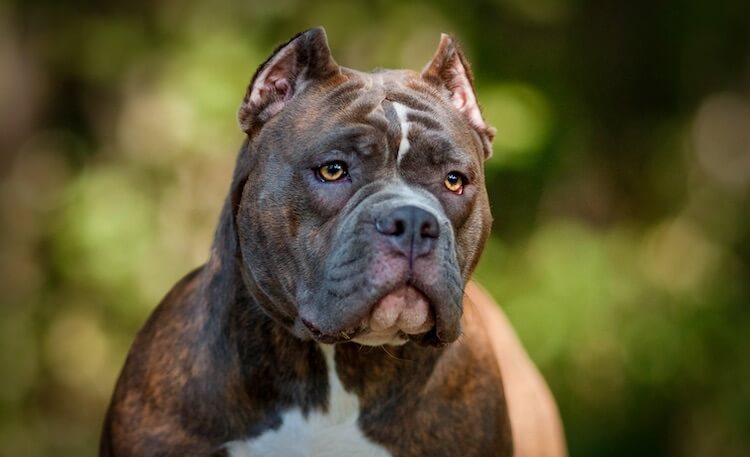
The American Bully is a breed that commands attention with its robust and muscular build. Broad chests and defined musculature give these dogs a powerful, athletic look, while their large, broad heads and expressive faces convey intelligence and awareness.
Despite their formidable appearance, American Bullies move with grace and agility, showcasing their physical prowess.
Size and Body Structure
The American Bully comes in four main varieties, each with its distinct height and weight range:
- Pocket: The smallest of the bunch, the Pocket American Bully stands less than 17 inches at the withers. Despite their compact size, they retain the muscular build of the breed. Typically, males weigh between 30-60 pounds, while females are slightly lighter.
- Standard: The Standard American Bully is a well-proportioned dog, standing between 17-20 inches for males and 16-19 inches for females. These dogs typically weigh between 40-70 pounds, showcasing a balance of strength and agility.
- Classic: The Classic American Bully mirrors the height of the Standard, standing between 17-20 inches for males and 16-19 inches for females. However, the Classic variety distinguishes itself with a lighter body frame and less body mass. They usually weigh slightly less than the Standard, focusing more on agility than bulk.
- XL: The XL American Bully is the largest, standing over 20 inches at the withers for males and over 19 inches for females. They possess a more substantial body mass compared to the other varieties, with males often weighing between 80-150 pounds and females slightly less.
Coat and Color Variations
The American Bully’s coat is another aspect of their appearance that’s worth noting. They have a short, smooth coat that’s easy to maintain, making them a great choice for those who prefer a low-maintenance pet. Despite the simplicity of their coat, it comes in a wide range of colors and patterns, including black, blue, brown, fawn, and even tri-color patterns.
Their coat is not only functional but also adds to their aesthetic appeal. The smoothness of their coat highlights their muscular definition, enhancing their robust appearance. As someone who’s spent a lot of time grooming and caring for dogs, I appreciate the ease of maintaining an American Bully’s coat, which requires little more than regular brushing to keep it looking its best.
The Temperament of American Bullies
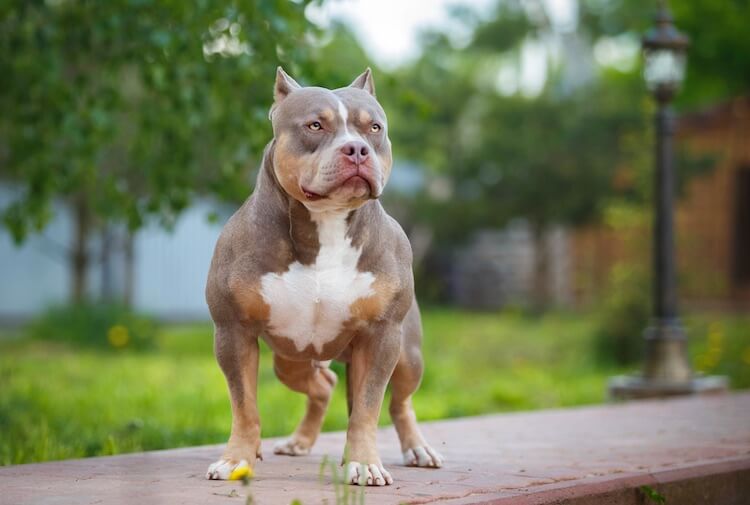
These dogs, with their muscular build and formidable appearance, often surprise people with their personality. I’ve spent considerable time with various American Bullies and each encounter reaffirms their reputation as gentle giants. Let’s delve into the traits that make their temperament so remarkable.
A Friendly and Loyal Companion
First and foremost, American Bullies are known for their friendly nature. Contrary to what their tough exterior might suggest, they are incredibly affectionate with their families. I’ve witnessed how these dogs form strong bonds with their owners, displaying a level of loyalty and devotion that’s truly heartwarming.
They are the kind of dogs that thrive on human interaction and love being part of family activities.
Their friendly demeanor also extends to children. American Bullies are often patient and gentle with kids, making them excellent family pets. Of course, like with any breed, interactions between dogs and young children should always be supervised. But in my experience, these dogs often show a remarkable understanding and tolerance towards the playful antics of children.
Confidence and Stability
Another standout trait of the American Bully is their confidence. These dogs carry themselves with a calm and steady demeanor, rarely showing unwarranted aggression or shyness. This stability is a testament to the breed’s careful development, focusing on creating a well-balanced canine companion.
Their confidence also means that American Bullies generally do well in various social situations. Whether it’s a walk in the park or a family gathering, they tend to remain composed and friendly. This isn’t to say that they don’t need proper socialization – like all dogs, early exposure to different people, animals, and environments is crucial for their development.
Intelligent and Trainable
The intelligence of the American Bully often goes underappreciated. These dogs are quite smart and respond well to training. They have a desire to please their owners, which, coupled with their intelligence, makes them quite trainable. I’ve worked with American Bullies in obedience and basic agility, and they’ve consistently shown both enthusiasm and aptitude for learning.
Their trainability also makes them suitable for various roles, including therapy and service work. With the right training, they can be excellent at tasks that require patience, understanding, and responsiveness.
Caring for American Bullies
Caring for an American Bully is a rewarding experience that requires a blend of love, understanding, and consistency. These dogs, with their unique needs and characteristics, thrive when given the right attention and care. In my journey with American Bullies, I’ve learned that their care goes beyond basic needs, encompassing physical, emotional, and mental well-being.
Feeding Guidelines
Proper nutrition is pivotal for the health and well-being of American Bullies. Given their muscular build, it’s essential to provide a high-protein diet that supports muscle health and energy requirements. The key is to choose high-quality dog food, ideally one that’s formulated for active breeds. Portion control is equally important to prevent obesity, a common issue in muscular breeds like the American Bully.
I always advise consulting with a veterinarian to determine the best diet for your Bully, taking into account their age, size, and activity level.
Remember, a well-fed American Bully is a healthy and happy one. And don’t forget about water – ensuring constant access to fresh water is crucial for their hydration.
Exercise Needs
American Bullies are energetic and thrive with regular physical activity. Daily walks, play sessions, and other forms of exercise are not just beneficial for their physical health, but also crucial for mental stimulation. However, it’s important to tailor the exercise regime to the specific variety of your Bully – the larger XL type might need more rigorous activities compared to the smaller Pocket type.
From my experience, a well-exercised Bully is more relaxed and well-behaved. Incorporating exercise into your daily routine will not only keep your Bully in good shape but will also strengthen your bond with them.
Grooming Requirements
Grooming an American Bully is relatively straightforward, thanks to their short coat. Regular brushing, about once a week, is sufficient to keep their coat shiny and healthy, and it helps to minimize shedding. In addition to coat care, regular nail trims, ear cleaning, and dental care are essential to maintain their overall health.
Despite their tough appearance, American Bullies can be prone to skin issues, so it’s important to check their skin regularly for any signs of irritation or allergies. A good grooming routine not only keeps your American Bully looking great but also provides an opportunity to check for any health issues and strengthen your bond with your pet.
How to Train an American Bully
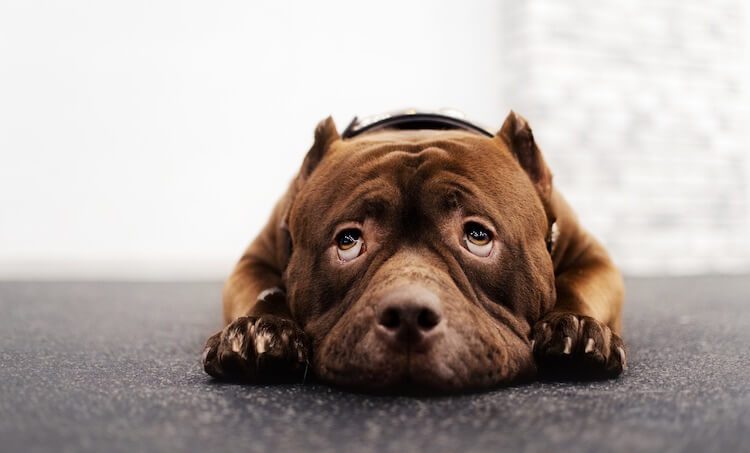
Training an American Bully is both a rewarding and essential part of their care. Known for their intelligence and eagerness to please, these dogs respond well to consistent, positive training methods. Having worked with many American Bullies, I’ve found that they are not only quick learners but also enjoy the mental stimulation that training provides.
Establishing Leadership and Consistency
The first step in training an American Bully is to establish yourself as a leader positively and firmly. This breed respects assertive, confident handling, but it’s crucial to avoid harsh methods. Consistency is key; setting clear rules and sticking to them helps your Bully understand expectations and fosters a respectful relationship.
I’ve seen the best results when owners are consistent with commands and routines. This predictability helps the dog feel secure and understand what is expected of them, leading to better training outcomes.
Positive Reinforcement Techniques
American Bullies, like most dogs, respond exceptionally well to positive reinforcement. This means rewarding good behavior with treats, praise, or playtime. Negative behaviors should be corrected immediately, but always gently and constructively.
One technique I often use is clicker training, which can be very effective for teaching new commands and tricks. The clicker’s sound helps the dog associate the behavior with a reward, making training more efficient and enjoyable for both the dog and the owner.
Socialization and Obedience Training
Early socialization and obedience training are crucial for American Bullies. Exposing them to different people, dogs, and environments from a young age helps them develop into well-adjusted adults. Basic commands like ‘sit’, ‘stay’, ‘come’, and ‘heel’ are fundamental and should be part of their early training.
Socialization not only helps in managing their behavior around others but also reduces anxiety and fearfulness in new situations. Regular, varied experiences make them more adaptable and confident in different settings.
Advanced Training and Activities
For those looking to go beyond basic obedience, American Bullies can excel in advanced training and dog sports. Their intelligence and physical prowess make them well-suited for activities like agility, weight pulling, and obedience competitions.
Engaging them in these activities not only keeps them physically fit but also provides mental stimulation, which is vital for this intelligent breed. It also strengthens the bond between the owner and the dog, as you work together towards common goals.
The Most Common Health Concerns Among American Bullies
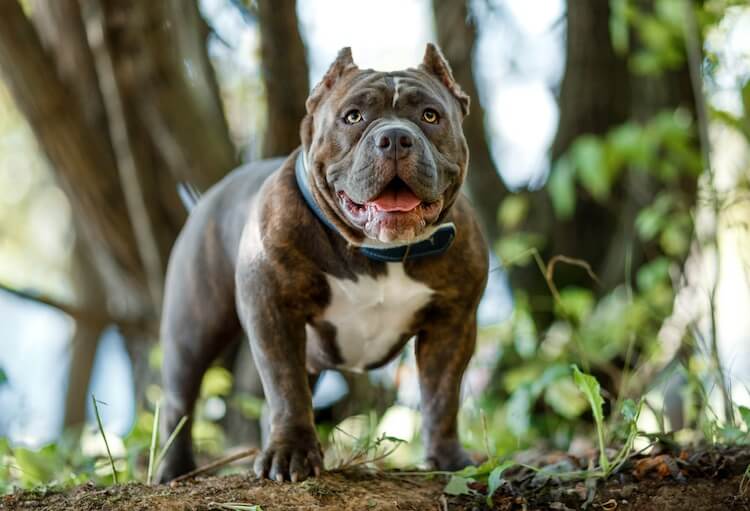
American Bullies are a robust and resilient breed, but like all breeds, they have certain predispositions to health issues. Being well-informed about these potential health problems is vital for early detection and effective management. In my years of experience with dogs, I’ve learned the importance of proactive health care in maintaining the well-being of these loyal companions.
Common Health Issues
- Hip Dysplasia: This is a genetic condition where the hip joint forms improperly. It can cause arthritis, leading to discomfort and reduced mobility. Hip dysplasia is particularly concerning in muscular breeds like the American Bully, as it can significantly impact their quality of life.
- Elbow Dysplasia: Similar to hip dysplasia, elbow dysplasia is a developmental disorder affecting the elbow joint, often resulting in lameness or arthritis. Early detection and management are crucial to minimize discomfort.
- Allergies: American Bullies often suffer from skin allergies, which can manifest as excessive itching, redness, and irritation. These allergies may be triggered by environmental factors, food, or flea bites and can require ongoing management.
- Heart Conditions: Various heart issues, including heart murmurs and valve diseases, are seen in this breed. These conditions can affect the dog’s overall stamina and quality of life and require medical management.
- Thyroid Issues: Hypothyroidism, a condition where the thyroid gland doesn’t produce enough hormones, is common in American Bullies. It can lead to symptoms like weight gain, lethargy, and hair loss.
- Cataracts: This condition involves the clouding of the eye’s lens, which can lead to impaired vision or blindness if left untreated. Regular eye checks are essential for early detection and treatment.
Health Management Tips
- Regular Veterinary Check-ups: Routine health examinations are critical for early identification and treatment of these conditions.
- Appropriate Diet: A well-balanced diet helps manage weight, which is particularly important for breeds prone to joint problems.
- Regular Exercise: Maintaining a healthy weight through exercise is vital but avoid over-exertion, especially in growing puppies, to prevent stress on the joints.
- Joint Supplements: Supplements such as glucosamine and chondroitin can support joint health, especially in breeds predisposed to dysplasia.
- Skin Care: Manage skin allergies with regular grooming, using hypoallergenic products, and following veterinary advice for any specific treatments.
- Monitoring Heart Health: Keep up with regular veterinary check-ups to monitor heart health, and follow any prescribed treatments or lifestyle adjustments.
- Eye Care: Regularly check their eyes for signs of cataracts and consult your vet for advice on care and treatment.
- Thyroid Monitoring: Be vigilant for signs of hypothyroidism and have regular thyroid function tests as recommended by your veterinarian.
The Cost of Owning an American Bully
Owning an American Bully, like any pet, comes with its financial responsibilities. While these dogs bring immense joy and companionship, potential owners need to be aware of the various costs involved. As someone who’s been around dogs most of my life, I’ve seen firsthand how understanding these expenses upfront can help in providing the best care for your pet.
Initial Costs
- Purchase Price: Depending on the breeder, lineage, and variety, the price of an American Bully can range from $2,000 to over $10,000 for high-pedigree dogs.
- Initial Veterinary Care: This includes vaccinations, deworming, and spaying/neutering. Expect to spend around $100-$300 initially.
- Essentials: Items like a bed, crate, collars, leashes, and feeding bowls are necessary. Set aside around $200-$500 for these initial essentials.
Ongoing Costs
- Food and Treats: High-quality dog food tailored to their size and activity level can cost about $50-$100 per month.
- Routine Veterinary Visits: Yearly check-ups, vaccinations, and heartworm/flea prevention can total $500-$800 annually.
- Grooming: Though low-maintenance, grooming costs like nail trims and occasional professional cleanings can be around $30-$100 per visit.
Training and Socialization
- Training Classes: Basic obedience classes or advanced training can range from $50 to $200 per session. Consistent training is key for American Bullies.
Miscellaneous Costs
- Toys and Accessories: Durable toys, additional leashes, or replacement of worn items can be around $50-$150 per year.
- Pet Insurance: This can greatly vary but expect to pay $30-$70 per month for a comprehensive plan, which I highly recommend.
FAQs About American Bullies
What is an American Bully?
An American Bully is a distinct breed, known for its muscular build and friendly temperament. They are a mix of various bulldog and terrier breeds, created to be companion dogs. This breed is recognized for its loyalty and affectionate nature, making it a popular choice among dog lovers.
Is an American Bully a Pitbull?
No, an American Bully is not a Pitbull. While they share some ancestry, American Bullies are a distinct breed. They have been bred specifically for their unique physical and temperamental traits, which differ from those of the American Pit Bull Terrier.
How long do American Bullies live?
American Bullies typically have a lifespan of 10 to 12 years. Their longevity can be influenced by factors such as genetics, diet, exercise, and regular veterinary care. Proper care and a healthy lifestyle can help ensure a longer, happier life for these dogs.
Can American Bullies live in apartments?
Yes, American Bullies can live in apartments as long as their exercise and mental stimulation needs are met. They are adaptable and can thrive in various living conditions, provided they get enough physical activity and attention from their owners.
Are American Bullies good with children?
American Bullies are generally good with children, known for their patience and gentleness. However, interactions should always be supervised, especially with younger children, to ensure safety for both the child and the dog.
So, Is the American Bully Right For You?
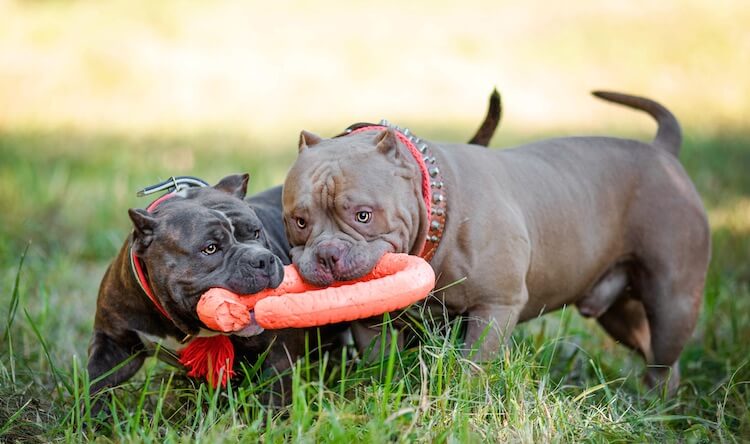
The American Bully is a breed with a unique blend of characteristics – they are muscular and strong yet surprisingly affectionate and gentle. Their energetic personality, coupled with a deep loyalty to their family, makes them a distinctive presence in any home. Understanding these traits is key in determining whether this breed aligns with your lifestyle and expectations.
The American Bully Is For
- Active Individuals or Families: If you enjoy an active lifestyle, the American Bully can be a perfect match. They thrive on regular exercise and love being part of activities.
- Those Seeking a Loyal Companion: Known for their loyalty and affection, American Bullies make excellent companions for those who value a strong bond with their pet.
- Experienced Dog Owners: Ideal for those who understand dog behavior and training. Their strength and energy require knowledgeable handling and consistent training.
- People Wanting a Low-Maintenance Dog: With their short coat and moderate grooming needs, they are a good fit for those looking for a lower-maintenance pet.
The American Bully Isn’t For
- First-Time Dog Owners: Their size and strength might be challenging for someone with no prior dog ownership experience.
- Busy or Frequently Absent Owners: American Bullies need attention, interaction, and regular exercise. They are not suited for people who are away from home often or cannot invest time in their care.
- Those Looking for a Guard Dog: Despite their tough appearance, they are generally friendly and affectionate, not ideal for someone seeking an aggressive guard dog.
- Apartment Dwellers Without Active Lifestyles: While they can adapt to apartment living, without adequate exercise and stimulation, they may develop behavioral issues.



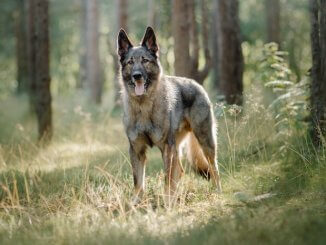
Yes, I have an American bully. Her name is Nova, she is a fantastic creature. She’s my best friend. Age is 1 year. Best dog ever!
Very interested, is there a bully that weigh 11 to 16 pounds. Or do they all weigh 32 lbs.
Hi Lorie,
You would probably be better looking at Frenchies.
I recently acquired 2 bully pups. At 8 weeks the female weighs 10lbs and the male 12 lbs. They go with me everywhere including my work at a cat rescue. Learning to walk on leash and excellent poty training. Training the female as a companion for my husband who is a long haul truck driver. The male I am training as a Diabetic service dog.
My baby is a little over a year and he weighs 87 pounds – thinking he weighs 5. He is this big gentle baby that loves to stay right on you but a lot more gentle with my 2 year old grandson. He is the best dog ever!
Our bully weighs 60lb. She is a female and the best dog ever, her temperament is amazing I didn’t realize I could love a dog so much!
Our beautiful girl is 16 weeks old and we are so in love 😍 She is around 11kgs and has imported parents from Australia. This bred is so loving. She is a replacement from our English Staffie who we lost at the age of 14 mid last year.
My pocket Bully Mesa is without a doubt one of the most amazing animals. She’s about 15 inches at the shoulders and about 55pounds of pure love, She’s my absolute best friend! Also she’s super smart & loves playing hide and seek!
Best rescue ever. He is my disabled husbands best companion. We love him ooodles and oodles.
I own two American Bullies they are my heart and are such loving companions. When we go to the park everyone loves them and they love everyone. Best thing ever happen for me as a adult!
I was given my Bully from a couple who couldn’t cope with how rambunctious he was at 4 months. He is the best dog I have ever owned, wonderful with my 10-year-old daughter, incredibly loving and affectionate. They are not too demanding in terms of exercise but are always up for a walk or a trip to the beach. Fantastic dogs.
Hey how to know she / he american bully or not
Please help and suggest me
While in the market for a puppy, an abused and neglected Bully came across our path. We immediately fell in love.
Hi. I have an American Bully. She is gentle and really protective. What bothers me is that she’s not good with our cats. In fact she killed 2 already. What’s wrong with her? Help.
Inherently enemies I guess. Need not continue keeping both cats and a Bully breed
Nothing! All dogs don’t like cats.
We have a 10 week old Pocket she was at first calm, we also have two other dogs a CAVAPOO 2 years old and Chihuahua 13 years old. Our bully doesn’t seem to get a long with our CAVAPOO not sure if you have some tips on getting them to fun play with one another but we are open to any ideas.
We rescued our American Bully. She was a court case and needed immediate foster. We were called and once again we are failed foster parents. Zoe Bowie is the kindest dog I’ve had and I had labs. Only problem is she is the boss and has fought with our American Bulldog/English Bulldog mix Jabba. Let’s just say he has lost to her twice and has given up being dominate. She now rules the pack. So no I would not say she is pet friendly but in her defense she was an abuse case and no nothing about her past. We love her faults and all.
I’ve just been introduced to a 3 year old Bully. We love him. He’s the most affectionate playful dog I’ve ever been around. He’s a sure winner at Tuggy, unless I wrestle him collegiate style and roll him upside down, on top of me. Then I might have a chance of getting the rope out of his mouth. He’s incredibly well behaved. Only problem is when I hide under the covers to stop the massive tongue licks, he walks on my face 😂
Daughters friend just gave up their bully. We took them in as we just put our 14-year-old pit mix to sleep. We have a 10-year-old boxer mix.
Sheriff(son named him) is 2 years old and such a sweetheart. He loves everyone including our other dog. He loves to run in the yard and chase balls and toys. He’s difficult to walk on a leash. We’re working on it.
Use a pinch collar to leash train him. Use it only while you are walking him on the leash. Our two year old was also a terror on the leash until we used the pinch collar.
Hi John,
Excellent article! I just learned a good deal from you. Very insightful, we have a 6 month old American bully named Sabrina who is a joy to have, thou a handful at times.
The reassurance of mild manner and obedient is exactly what I love to hear.
Our 8 yr chihuahua is laying down the law and Sabrina is listening.
Thanks again
I have a female American bully shefi. she is very cute lovingly and kind . she is four years old and her eyes are blue . she never irritate us. she always follow the command of us . she eats everything l have no complaint about her food and behaviour. she is so sweet she wants only love.
Everyone loves Daisy she is 5 months and loves people, specially kids my daughter’s best friend. Question though is my bully at an ok weight. She is 5 months 38 pounds. 🤷🏽? Anyone can tell me
I have a 7 month fawn bully with hazel eyes and his name is Koa. I have not had a dog in about 30 years and he just stole my heart. He weighs 64 lbs and we are working with the Vet to slim him down a bit as this breed is prone to joint problems. He can be a rascal but such an affectionate sweetie 🙂
My neighbor owns an American Bully. He is about 2 yrs old. I was out in my back yard and he was in his. There is a 10ft wooden fence between the yards. I could hear the dog getting worked up when I went outside, running and barking, almost frantically. After about 5 minutes of this, I looked up from what I was doing and saw the dog hanging on the fence (head, neck, front paws) barking wildly at me. Luckily I had a big stick in my hand. I walked over and swung at him to get him off of the fence. That is not a nice, friendly, gentle dog. Had I not had the stick, I might not be writing this comment today. Be honest about what you say. All aggression has not been bred out of these dogs and families need to be very careful with children. Now I need to have my gun and other weapons with me when I go to my backyard because the dog can jump the fence…And the owner was inside the house the entire time…never came out to calm his ferocious dog. SMH
hmmmm. Are you sure it is an American Bully? What size? I doubt that a pocket can jump a 10ft fence. I think the article is being honest. Just with ANY breed, there can always be an exception. 99% American Bullys are very pleasant.
That’ll be the owner that’s maid it like that not the dog chocking you be aggressive 🙄
You showed fear and aggression toward the dog and acted aggressive toward it with a weapon. You may have been seen as a threat. You can’t judge an entire breed by one incident.
Yes we have an xl bully in the family and she is everything you mention above, a lovely, friendly, gentle giant 💜
I was blessed with a Female bully. My Brother purchased her for me as a Christmas gift her name is Winter Leigh she is two years and two months old now. She’s absolutely adorable and loveable as can be . She loves me and I love her she has definitely won my heart . My children are grown and living their own lives and she has taken away the loneliness I felt missing them she is my baby . She and I are a team and we spend mostly all our time together. No matter what I have to do away from home I can’t bare to be away from her too long two hours is my limit and when I return home she’s jumps all over me licking and kissing me like I been gone forever. Yes I would say a Bully is a fabulous pet .
We have just got our first XL American Bully. He is called Beau and he’s 15 weeks old and we love him and the breed.
I appreciate that you explained although this breed has amazing size, defined muscles, and a robust physique, it is reasonable to state that they are quite sweet-hearted and have a sensitive disposition. My best friend is looking for some info, this should help him. I appreciate that you helped me learn more about American bully puppies.